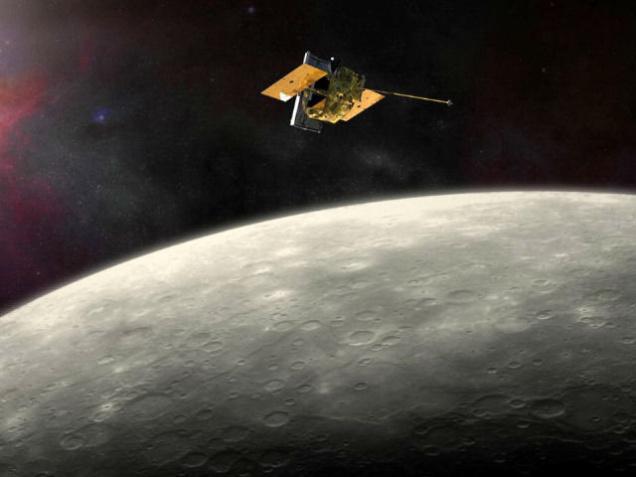NASA spacecraft to crash into Mercury in two weeks
Tue 21 Apr 2015

After more than four years of orbiting Mercury, NASA’s MESSENGER spacecraft will crash into the solar system’s innermost planet in two weeks when it runs out of propellant.
NASA’s MErcury Surface, Space ENvironment, GEochemistry, and Ranging (MESSENGER) spacecraft, which was launched in 2004, will impact the planet’s surface, most likely on April 30, the U.S. space agency said.
The spacecraft will impact Mercury at more than 3.91 kilometres per second on the side of the planet facing away from Earth.
Due to the expected location, engineers will be unable to view in real time the exact location of impact.
This week, mission
operators in mission control at the Johns Hopkins University Applied Physics Laboratory (APL) in Laurel, Maryland, completed the fourth in a series of orbit correction manoeuvres designed to delay the spacecraft’s impact into the surface of Mercury.
operators in mission control at the Johns Hopkins University Applied Physics Laboratory (APL) in Laurel, Maryland, completed the fourth in a series of orbit correction manoeuvres designed to delay the spacecraft’s impact into the surface of Mercury.
The last manoeuvre is scheduled for April 24.
“Following this last manoeuvre, we will finally declare the spacecraft out of propellant, as this manoeuvre will deplete nearly all of our remaining helium gas,” said Daniel O’Shaughnessy, mission systems engineer at APL.
“At that point, the spacecraft will no longer be capable of fighting the downward push of the sun’s gravity,” he said.
No Comments For This Post, Be first to write a Comment.
Most viewed from Specials
Most viewed from World
AIMIM News
Latest Urdu News
Most Viewed
May 26, 2020
Do you think Canada-India relations will improve under New PM Mark Carney?
Latest Videos View All
Like Us
Home
About Us
Advertise With Us
All Polls
Epaper Archives
Privacy Policy
Contact Us
Download Etemaad App
© 2025 Etemaad Daily News, All Rights Reserved.






















.jpg)
.jpg)
.jpg)

















